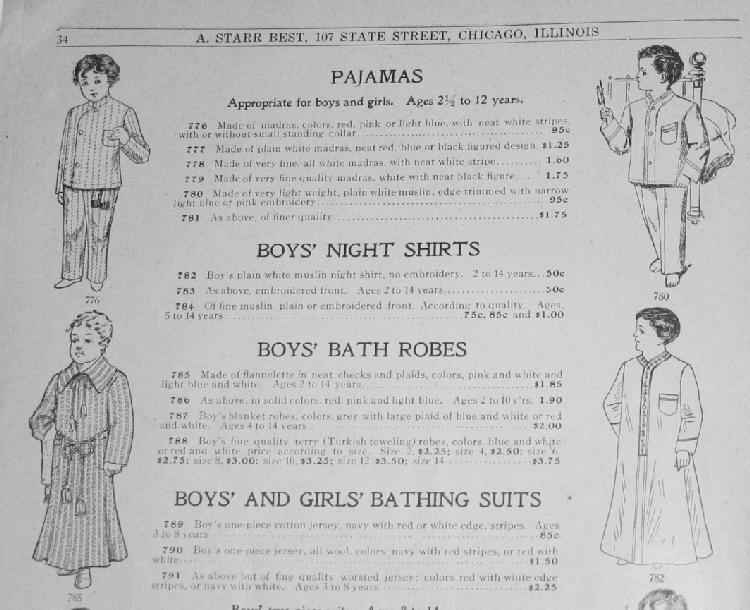
Figure 1.--This is the sleepwearr items that A. Starr Best offered for boys in 1905. It suggests that by 1905 that pajamas were replacing nightshirts as standard sleepwear. |

|
Sleepwear was still varied in the United States during 1905. We note advertisements for both pajamas and nightshirts. We are not sure if pajamas were more common for boys thn for men. We note A Star Best in Chicago offering sleepwear for boys. They offered both nightshirts and pajamas. There were slightly more offerings for pajamas. We believe that it was during the 1900s that boys sleepwear shifted from nightshirts in the 19th century to pajamas in the 20th century.
We know nothing about the A. Starr Best department store. The catalog indicated that it was located on State Stree on Chicago. The size of the catalog and location suggests that it was a fairly substantial store. We thought at first it was the origins of Best & Co., but this was a New York department store.
Pajamas are a relatively recent innovation in boyswear. Pajamas are derived from a Hindi word. This is because they were introduced to Europe and America about 1880 from India for men to wear for sleeping instead of nightshirts. Pajamas consisted of a matching jacket and trousers--loose fitting trousers. There is a difference between the spelling in America and Britain. Pajamas, is spelled pyjamas in Britain, Canada and other British Commonwealth countries. Pajamas were not commonly worn in the late 19th and early 20th century, especially by boys. Nightshirts were still much more common well into the 20th century. There are several different types of pajamas worn by boys. Pajamas unlike nightshirts tend to be distibctive for boys and girls.
We have only limited information on nightshirts. We are not sure when they became commonly worn. We know they were worn in the 19th century, but we are not sure when they first appeared. I believe they were also worn in the 18th century, but have no information to substantiate this yet. A reader writes, "Before the 19th century the nightshirt was worn by few people. In several places of Europe the people go to bed naked, in other places wearing the day shirt. Only in 19th century the nightshirt became a common wear." Boys wore nightshirts to bed like their parents. Nightshirts were commonly worn throughout the 19th century. We note night shirts advertized in catalogs. One Americam pattern company offered night shirt patterns in 1869. We note an American boarding school, the Holderness School, in the 1880s. Until the middle of 20th century men and boys slept in similar nightshirts. The nightshirt was a bedtime garment styled like a manís shirt. It was done in various lengths, usually to the knee or calf. It had a rounded hem and a slash at the side seams. Most of the nightshirts we have seen are white. We are not sure if there were colored or print nightshirts. Other specialized sleepwear like pajamas and sleepers only appeared in the 20th century. We notice German mailorder catalogs offering nightshirts into the 1950s. A Bulgarian reader tells us, Nightshirts were no longer common in Bulgaria when I was a boy in the 1970s. They were earlier very common. My grandmother who was a little old fashion made me a nightshirt when I was 10 years old. I remember that I rather liked it."
A Starr Best offered a variety of sleepwear and robes. There were twice as many pajamas offered as nightshirts. Generally there was more demand for the garment offered in the greatest number of styles. Thus this could be a an indicator of relative populrity. Interestingly, even though pajamas had pants, Best describes them as for boys and girls. We are not sure to what extent girls in 1905 actually wore pajamas. The night shirts on the other hand were just for boys. One woud think that night shirts would be more likely garments suitable for boys and girls as wold be robes. We suspect that the styles for girls were fancier which is why these offerings were not seen as suitable for girls. The pajamas were for children 2 1/2 to 12 years of age. The night shirts were for boys 2/5-14 years. The bath robes were for boys 2/4-14 years.
Navigate the Boys' Historical Clothing catalog/magazine pages:
[Return to the Main 1905 catalog page]
[Return to the Main 1900s catalog pagepage]
[Main photo/publishing page]
[Store catalogs]
[Fashion magazines]
Navigate the Boys' Historical Clothing Web Site:
[Introduction]
[Activities]
[Biographies]
[Chronology]
[Cloth and textiles]
[Clothing styles]
[Countries]
[Topics]
[Bibliographies]
[Contributions]
[FAQs]
[Glossaries]
[Images]
[Links]
[Registration]
[Tools]
[Boys' Clothing Home]
Navigate the Boys' Historical Clothing Web Site:
[Sailor hats]
[Sailor suits]
[Buster Brown suits]
[Eton suits]
[Rompers]
[Kneepants]
[Knickers]
[Tunics]
[Smocks]
[Pinafores]
[Long stockings]
[Underwear]
